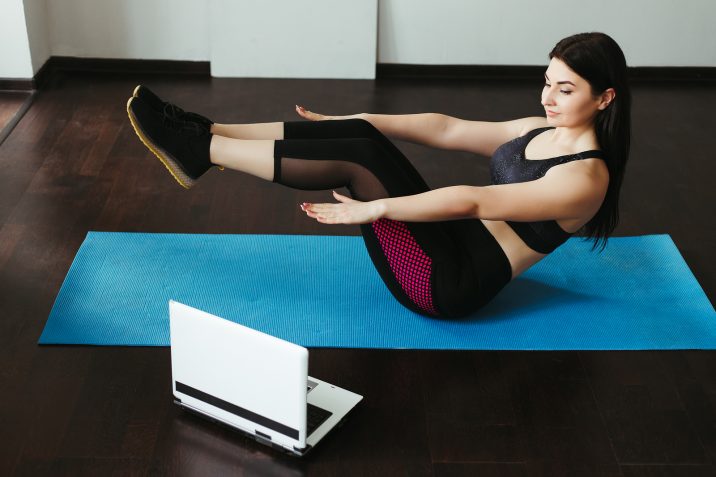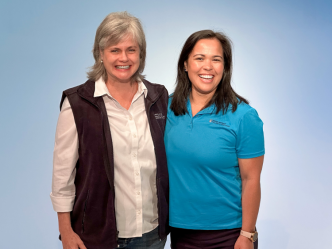As Americans continue another month of social distancing during the COVID-19 outbreak, it’s tempting to curl up in front of the television or in bed with a good book. But experts say that now is actually a good time to start or to change up a fitness routine.
“The usual, legitimate excuses about time and scheduling no longer apply for many people,” said Dr. Andrew Moore, professor of kinesiology. Because schools have closed and many commutes have been eliminated in favor of telecommuting, both students and professionals may have more free time and flexibility.
And this means we have more time to focus on ourselves.
15 body weight exercises you can do at home:
Start in a low squat with your hands on the floor. Kick both feet back to a push-up position. Do one push-up, then jump feet back to the squat position. Leap up as high as possible. Return to low squat. Repeat.
Stand with feet hip-distance apart, arms at your side. Bring heel to the buttocks, place ball of foot back on the ground and bring left heel to the buttocks. Alternate and build speed until it feels like jogging in place.
Stand with feet hip-distance apart, arms at your side. Bring heel to the buttocks, place ball of foot back on the ground and bring left heel to the buttocks. Alternate and build speed until it feels like jogging in place.
Lie face-up and extend the legs up to a 45-degree angle. Keep arms straight and in line with the floor, palms facing down. Lift the head, neck and shoulders slightly. Keeping legs straight and toes pointed. Lower one leg, raise the other. Alternate legs.
Stand with feet shoulder-width apart. Lift one leg as high as possible. Return foot to floor. Alternate legs. Repeat.
Lie face-up and extend the legs up to a 45-degree angle. Keep arms straight and in line with the floor, palms facing down. Lift the head, neck and shoulders slightly. Keeping legs straight and toes pointed. Lower one leg, raise the other. Alternate legs.
Start on the hands and knees. Bring left foot forward, directly under chest, while straightening right leg. Keeping hands on the floor and core tight, jump and switch legs. Repeat.
Lie face-down with forearms on the floor and hands clasped. Extend legs and rise up on toes. Keeping back straight, tighten core and hold position. Hold. Repeat.
With hands shoulder-width apart, keep feet flexed at hip distance and tighten the core. Keep elbows tucked close to the body. Bend elbows until chest reaches the floor, then push back up. Repeat.
Start with the feet shoulder-width apart, toes forward. Step out with the foot as wide as possible. Crouch while keeping the knee over the foot, opposite leg straight, both soles of the feet on the ground. Punch the heel into the floor to push back to standing. Repeat.
Lie face-up, roll to the side. Rise up onto one foot and elbow. Keep body line straight, hips lifted and core engaged. Hold. Repeat.
Lie face-up, with the arms across the chest or hands behind the head, and knees bent. Lift upper and lower vertebrae from the floor until everything above the buttocks is not touching the ground. Repeat.
Stand with feet flat on ground. Keeping heels to the floor, crouch by bending hips and knees until thighs are at least parallel to the floor. Press through the heels to return to a standing position. Repeat.
Stand with the knees slightly bent, then jump up as high as possible. Bring knees in toward chest while extending arms straight out. Land with knees slightly bent.
Lean against a wall. Slide back down until the thighs are parallel to the floor. Make sure knees are directly above ankles and keep back straight. Hold. Repeat.
“We have no idea when the social distancing recommendations will lift, so I would challenge people to try to reach a new normal for their own health,” said Dr. Dan Greene, professor of kinesiology.
Quarantine can be hard on a person’s mental health, too. So now might also be an optimal time to use physical fitness for its mental health benefits. One study by researchers at the University of Toronto found symptoms of post-traumatic stress disorder and depression were observed in about a third of those quarantined during a SARS outbreak in Toronto, Canada.
“When we talk about health we have to talk about mental health, as well,” said Dr. Hannah Bennett, professor of kinesiology. “I exercise to maintain my sanity. It’s a good outlet to get any sort of stress or tension released.”
Dr. Maleah Holland, professor of kinesiology, agreed that the time is right to focus on a combination of physical and mental health: “We never have time for true contemplation so we never fully comprehend. Now is a great time for relaxed contemplation,” she said.
And especially for students and researchers, there’s an additional benefit to fitness activities.
“Exercise — especially aerobic exercise — is really good for your brain function. So, it might be a good idea to get in a light workout before you tackle cognitively demanding work,” Moore said.
The good news is that the key to starting or maintaining an active lifestyle is much more basic than people realize, according to Greene: Simply accumulate burned calories throughout the day.
“It doesn’t matter if you do one push-up 100 times a day, or if you do 100 push-ups once a day,” Greene said. “It’s all about the total accumulation of activity.”
Greene recommends downloading a movement reminder app or simply setting calendar reminders to get up and move for a few minutes every hour of the day. It’s a mood booster and a fitness booster, but it can also have long-term health benefits. Researchers in Australia identified spending too much time sitting as an important predictor of increased risk of type 2 diabetes and cardiovascular disease.
But there’s no need to invest in a home gym or even a set of dumbbells.
“People forget that their body is a tool,” Bennett said. “If we just utilize the tool that is our own limbs, we can be very efficient in exercise.”
Moore said it’s easy to find at-home fitness options.
“Just cleaning around the house is a way to stay active,” he said. “Scrubbing the bathtub is a physically demanding activity. Cleaning out the garage and the attic are on my list, and I know they are going to be physically taxing.”
You can make your own weights by using canned goods or filling empty milk jugs with water or sand. Holland said when she was a student, she would simply walk while she studied. Now she uses a standing or treadmill desk while she works.
And even with shelter-in-place laws, it is still healthy to get outside and into the sunshine.
“If you have a house with a back yard, gardening is a very labor-intensive activity and can be a fulfilling, fun thing to do,” Moore said.
Holland does walking lunges around the perimeter of her back yard. “The best medicine is the simplest — go outside and walk. Look around and just listen and relax. That’s when I have my best ideas,” she said.
If you’re sheltering in place with family, you can work to hold one another accountable.
Family members can remind one another to get up and move, create challenges for one another, and do activities together. But even if you are sheltering in place alone, digital communication makes it possible to work out with distant friends and family.
“Using technology, you can start challenges with friends and coworkers through fitness trackers or downloadable apps. You can set up challenges and competitions to motivate each other. Maybe when this is all over, the group takes the winner out for a meal,” Greene said.
Holland said parents can turn on some music and just dance with their kids, or put a mattress on the floor and do gymnastics. Bennett said she’s seen moms get creative and use their toddlers as weights while their kids giggle along.
And if family tensions rise, Bennett said that a workout — with its immune-boosting, mind-clearing, stress-lowering impact — might be just what the doctor ordered: “You’re only one workout from a good mood.”
Read more: Check out free resources to stay active while staying home.
 Augusta University
Augusta University




